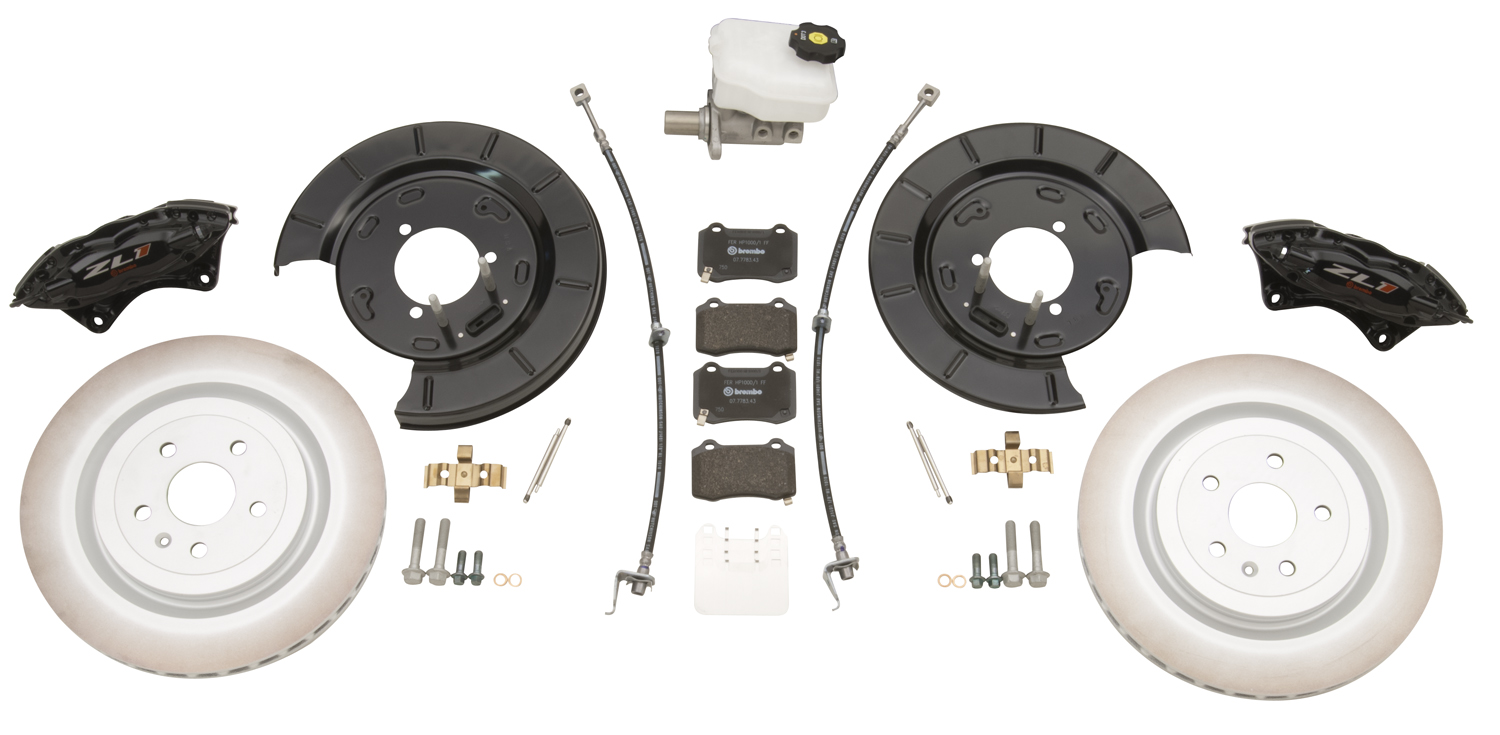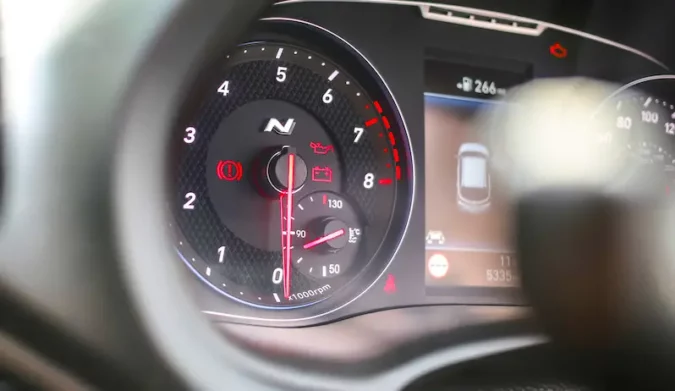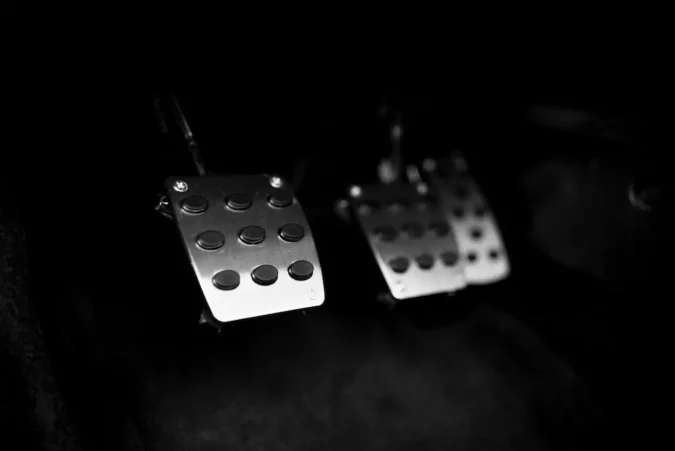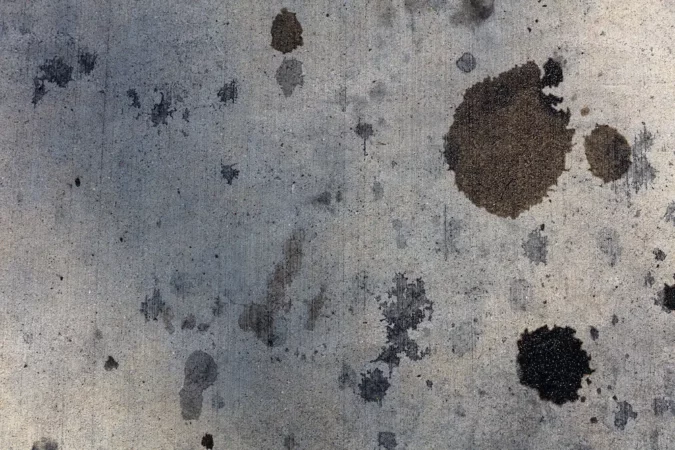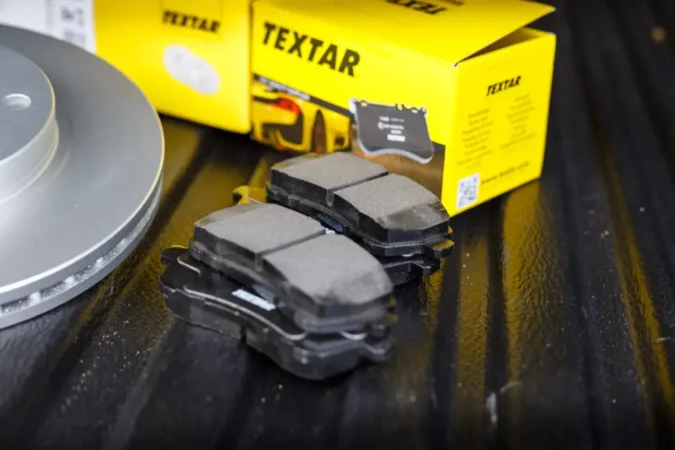Has your brake pedal started to behave strangely and feels spongy? Well if that is the case, then you are at the right place because, in this article, there will be a lot to cover when it comes to the bad master cylinder symptoms.
Doing your research on a particular problem is always a smart thing to do. Why we are saying this? Well, because it is true. Doing your research would often save you hundreds or even thousands of dollars. Mainly because mechanics out there often can misdiagnose stuff and make you pay more than you should.
And especially when it comes to simple problems such as this with the brake master cylinder, you will end up paying thousands of dollars in some cases. This is why if you want to wrench on your car, learning more about this problem is the way to go in our opinion. And luckily for you, we are going to cover everything you need to know.
First, we are going to learn the basic principles of how the car baking system works. Then we will cover the master cylinder and see how this component works. Once we clear the basics out of our way, we will move on to the bad master cylinder symptoms, as well as the diagnostics, and the replacement process.
How Does The Braking System Work
Now let’s move on and learn more about how the braking system works. We think that this is really essential because the master cylinder is only one piece of the puzzle. So, you need to understand the bigger picture of what components this system is made of.
Now let’s cover how this system works and understand more about the method of operation. What is worth pointing out first is that the brake system is a hydraulic system. This means that this system works with the help of hydraulic fluid. Also known as brake fluid.
This fluid does not compress at all. So, when the brakes are applied, the fluid puts the right amount of pressure on the lines and then the pistons on the calipers activate in order to squeeze the brake pads.
And as the pressure increases, the pads come into contact with the caliper. During this process, the car simply stops, since there is pressure is applied to the pads. But how do the pads know when to retract?
Well, that’s a good question. The braking system works with the help of a vacuum. This means that whenever you release your foot from the brake pedal, the vacuum will push the brake pads and return the brake pads to their original position.
And for this purpose, there are the brake booster and the master cylinder. The brake booster (unless you notice the symptoms of a bad brake booster or need a brake booster replacement) increases the force that you apply from the brake pedal with the help of a vacuum. So, this device eases the use of the brakes.
But what about the master cylinder? What does this component do and how does it works? More about that, we are going to cover more next and then we will learn more about the bad master cylinder symptoms.
Master Cylinder
Now before we dive into the bad master cylinder symptoms, let’s learn more about what is a master cylinder in general. A lot of people are not aware of this master cylinder and its crucial function in the brake system. And to be clear, we’re talking about the master brake cylinder, not the master clutch cylinder.
The master cylinder is basically the brain of your braking system, it converts mechanical force into hydraulic pressure. This device together with the brake booster is mounted on the firewall. So, every time you open up the hood of the car, you will notice the master cylinder on the right side of the firewall.
This device is called a master cylinder because it controls the slave cylinders. The slave cylinders are located on each brake caliper. These cylinders are basically the pistons that open and close on the caliper.
So, when you apply the brakes, there is a piston that moves inside of the master cylinder and this piston pushes the hydraulic fluid into the brake lines and then to the slave cylinders.
And what is important when it comes to the master cylinder is to note that there are two circuits inside of this cylinder. This is needed because one circuit can fail and you will lose the brakes completely.
So, when you have two circuits, you never lose the brakes. One circuit controls the brakes on the front and one circuit controls the brakes on the rear.
And if your master cylinder fails, you can lose only one of the sides. And later when we are going to cover the bad brake master cylinder symptoms, we are going to learn more about what are the consequences of driving this way in the long term.
But is a bad master cylinder a serious problem? More about that, we are going to cover next.
Is A Bad Master Cylinder A Serious Problem
Now let’s cover another topic before we dive into the bad master cylinder symptoms. Namely, how serious this situation is, and whether you should be alerted or not?
Well, this is a serious problem. Even though this is not a complete failure since this master cylinder has two different circuits, you should focus on solving this problem.
You just never know when this master cylinder will fail completely and cause you to lose the brakes altogether.
So, we recommend that you take things pretty seriously and replace the component if you notice some of the bad master cylinder symptoms. But what is causing this component to fail? More about that, we are going to answer more in the following chapter and elaborate on the common causes for the failure of this system.
Bad Master Cylinder Causes
Now let’s move on and learn more about the causes of a bad master cylinder before we discuss the bad master cylinder symptoms. What are the most common causes of this problem? Well, let’s elaborate.
These master cylinders usually fail internally. This means that the internal components of the cylinder simply fail by themselves. This failure is not caused by outside factors.
There is a spring that pushes the piston and this spring can go bad. As well as the rubber seals that are used on the master cylinder can deteriorate and fail.
So, the master cylinder can start leak brake fluid. And this is basically a dead giveaway that you have a bad master cylinder. Leaks are probably one of the most notable symptoms.
But more about the bad master cylinder symptoms, we are going to further elaborate in the following chapters in great detail.
Bad Master Cylinder Symptoms
Now let’s dive into the symptoms of a bad brake master cylinder. Knowing the symptoms is really important when it comes to solving this problem with your car.
So, in the following chapters, we are going to cover them in great detail and learn more about what is causing these symptoms and figure things out from there. Now let’s dive into the bad master cylinder symptoms.
1. Brake Light On
The first symptom on our list of bad master cylinder symptoms is the brake light. The brake light if you don’t know is a circle with a big exclamation mark in the center.
You should not confuse this light with the parking brake because the parking brake has a P symbol in the center instead of an exclamation mark.
So, when this light turns on, it means that you have a problem with the braking system on your car. This means that you should take your car to the nearest service center to get it sorted out. Now let’s move to the next on our list of symptoms.
2. Spongy Brake Pedal
The next symptom in our list of bad master cylinder symptoms is the spongy brake pedal. The brakes pedal will feel spongy if your master cylinder is leaking. So, why is this the case?
Well, this would be the case because if a seal is leaking, there will be air in the lines. So, when you have air in the system, this means that the brakes will behave like a sponge.
This is the case because air is able to be compressed. Unlike brake fluid that does not compress. And in this case, you have a diluted brake fluid that is filled with air, and the fluid is compressed. So, beware of this symptom.
3. Sinking Brake Pedal
Next on our list of bad master cylinder symptoms is the sinking brake pedal. When your master cylinder fails, you can expect the brake pedal to sink a bit. So, why is this the case?
Well, inside the master cylinder, there are springs that move. And if the spring inside of the master cylinder fails, you will have a sunken brake pedal.
This is why if you notice a situation like this, it is important that you react quickly in order to tackle the issue. If this happens, one of the circuits of the master cylinder is not working properly. So, you are stuck with only one circuit that is in proper working order. Now let’s move on to the next bad master cylinder symptoms.
4. Longer Stopping Distance
The next in our list of bad master cylinder symptoms is the longer stopping distance. So, why is this the case?
Well, let’s say that one of the circuits has failed in the master cylinder. Let’s say the rear circuit does not work. So, in this case, you will not have rear brakes.
Even though the rear brakes do not play as significant of a role, they can fail and cause all sorts of issues. Most notably, they will increase the stopping distance on your car.
So, this would result in a longer delay until the car comes to a stop. That’s why if you notice something like this, it is important to act quickly before the car eventually loses the brakes completely.
Which shouldn’t happen. But if you drive the car a lot after this defect, it is possible that the second circuit to fail completely, resulting in the complete loss of the braking system. Now let’s move on to the next in our list of bad master cylinder symptoms.
5. Visible Leaks
Next on our list of bad master cylinder symptoms are the visible leaks that will be present on the master cylinder itself.
So, if you open up the hood and you locate the master cylinder on the firewall and see how there is a light greasy coating, it means that the master cylinder is leaking fluid.
In these cases, replacement is your only option for you. There are no other options besides replacing it. Some people try to fix them. But overall, it is not economically feasible to fix it.
That’s why not a lot of people are doing this. People just replace this master cylinder with a new one and call it a day. Now let’s move on to the next bad master cylinder symptoms.
6. Dirty Brake Fluid
Another symptom on our list of bad master cylinder symptoms is dirty brake fluid. Dirty brake fluid can cause a malfunction inside the brake master cylinder. So, why is this the case?
Well, the master cylinder is sensitive when it comes to the purity of the fluid. This is why it is recommended that you replace the fluid on your car at the recommended intervals.
There are all sorts of materials like metal and rubber, that can end up in the fluid and dilute it. And this diluted fluid will cause your brake master cylinder to malfunction at some point.
In the end, you might also have to consider a brake fluid flush (just bear in mind the cost of a brake fluid flush) or brake fluid change, as the original fluids are now contaminated.
So, be really aware of this problem. Now let’s move on to the next symptom on our list of bad master cylinder symptoms.
7. Uneven Pad Wear
Next on our list of bad master cylinder symptoms is uneven brake pad wear. So, why is this the case? Why would brake pads wear unevenly on your car when you have a problem like this?
Well, as we noted, there are two circuits. So, if one fails, the second circuit will work. This means that your front wheels or rear wheels will not brake.
When one of the wheels starts to brake, you will have increased wear on some of the pads. For comparison, check out our guide on how long do brake pads last, as well as how long should brake pads last. While the other will look brand new.
And when all four wheels do not brake, your car will simply go through these pads extremely quickly. So, if you notice increased pad wear, it is worth you to make sure that the brakes activate. Now let’s move to the last on our list of bad master cylinder symptoms.
8. Brake Bias
And the last on our list of bad master cylinder symptoms is the brake bias that will be present. But what is brake bias?
Well, brake bias is simply a situation when your brakes are biased. So, if you don’t have properly working brakes, the car will bias on one side.
So, if the car behaves abnormally when you apply the foot on the brakes, it means that you have brake bias. A car should not pull at any side when you apply the brakes. But how you can diagnose a bad master cylinder? Well, more about that, we are going to cover it next.
Diagnosing A Bad Master Cylinder
Now that we covered the bad master cylinder symptoms, let’s now learn more about how to discuss the bad master cylinder. How you can know when you have a bad master cylinder in your car?
Well, the first thing that you have to check is leaks. Make sure that there are no leaks on the brake calipers. Since the soft and squishy brake pedal can be caused by leaks in the lines.
Then you want to check the master cylinder for leaks. If there are leaks around the master cylinder then it is obvious that there are problems with the master cylinder.
But what can happen is that these master cylinders can fail internally. And if the pedal sinks or feels spongy while there are no visible leaks, then the master cylinder is probably causing the problem. Unfortunately, there is no proper test than removing the master cylinder and inspecting it manually.
This is why you should just go ahead and replace it with a new one. And more about that, we are going to cover next.
Master Cylinder Replacement
Now that we know the bad master cylinder symptoms, let’s take a look a the replacement of this master cylinder. How can you replace this component on your car?
For this job, you will need a 10 mm wrench to remove the lines, as well as a wrench to unbolt the master cylinder itself from the brake booster.
Then replace the master cylinder and repeat the process. Then comes the interesting part. And that is bleeding the brakes.
For this purpose, you need to have another person to push the brake pedal until the air comes off the system. Or just follow Scotty’s advice in the video above, where he uses a big screwdriver to achieve the same task.
Instead of a screwdriver, you can use a long wooden piece. Anything works. Just make sure that you bleed the brakes correctly.
Master Cylinder Replacement Cost
We learned the bad master cylinder symptoms, as well as the diagnostics and replacement process. Now let’s take a look at the replacement cost for a master cylinder. How much does it cost to replace the master cylinder on your car, what is the master cylinder cost?
Well, the master cylinder is not a crazy expensive component. The part alone usually costs anywhere between $150 and $300. So, we can say that it is somewhat affordable. Also, always go for OEM parts and avoid knockoffs. This way, you will be sure that you get the right quality for your money.
Also, the labor will cost you anywhere between $100 and $200. Labor is expensive here in the US. So, you have to be prepared for this when you are doing any type of work on your car.
Bad Master Cylinder Symptoms: In Conclusion…
In this article, we have covered quite a bit when it comes to the master cylinder. First, we learned how the brake system works and then how the master cylinder works. Once we cleared that out of our way, we discussed the seriousness of this problem, as well as the causes of the problem.
In the second part of the article, we discussed the bad master cylinder symptoms. Then, we learned how to diagnose, and replace the component, and the costs involved.
Frequently Asked Questions
Now let’s answer some frequently asked questions.
What Is A Master Cylinder
A master cylinder is the heart of the braking system. This is a component that converts the force that you apply with your foot on the brake pedal into hydraulic pressure. This hydraulic pressure is then sent to the brake calipers where the pistons are activated and then they press the brake pads.
What Does A Master Cylinder Do
The master cylinder is a component that creates hydraulic pressure. You press your foot on the brakes and hydraulic pressure is created. This pressure then pushes the brake fluid through the brake lines and activates the brakes. Then as you release the pressure from the brake pedal, the fluid returns to the master cylinder reservoir.
How To Tell If The Master Cylinder Is Bad
It is somewhat difficult to tell if a master cylinder is bad. Usually, when this component goes bad, there are leaks that develop on the master cylinder itself. This will allow air to enter the system and the brake pedal to feel spongy. If the master cylinder fails internally, often can cause the brake pedal to sink in. So, if the brake pedal feels spongy or the brake pedal sinks, you can assume that the master cylinder is bad.
Does Brake Fluid Go Bad
The fluid itself does not go bad. But what happens is that dirt particles, as well as moisture, will enter the brake fluid and basically ruin the performance of the fluid. This is why we strongly recommend that you flush the brake fluid on your car every few years.
What Are The Symptoms Of A Bad Brake Caliper
A brake caliper cannot fail. But what can happen is the pistons that are installed on the caliper can fail. More specifically the seals. So, the caliper can end up stuck and the brake fluid can leak. This is why you need to check the brake fluid level, just for a good measure.
How Much Is A Master Cylinder Replacement
A master cylinder replacement is about $350 if you do this at a mechanic’s shop. Usually, the part is about $150 and the labor is about $100. But don’t take these numbers for granted, since not every car manufacturer has parts that are affordable. Some, especially luxury brands can have really expensive parts.

